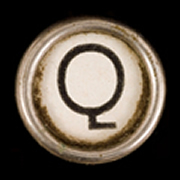
People arriving in Luang Prabang via the two-day slow boat journey arrive with something unique, something that changes the way they perceive the town. For me it was a wicked case of the runs; the result of dodgy buffalo curry eaten at Pak Beng the night before. It meant my first impressions of Luang Prabang were a little skewed by having to spend a day and a half huddled in the corner of our hotel room rocking back and forth.
Once the fury had run its course I was able to get out and about and quickly realised that the place is a cool little town. It has a different look and feel to other Lao towns. The French colonial architecture infused with that relaxed Laos appeal. The old town clusters around the junction of the Mekong and Nam Song rivers. Its streets are clean, quaint and quiet. It also has UNESCO World Heritage status due to its numerous Buddhist Wats; there are dozens of them around the town, both infant and ancient.
Luang Prabang caters to all levels of tourist. Although a fraction more pricey than in other parts of Laos, there are plenty of backpacker hovels (where we stayed). Then there are dozens of luxury hotels, guesthouses and restaurants catering to your higher end tourist. This makes for an interesting mix of people on the streets: starched collared polos and boat shoes can sip single malt at US$25 a pop while dirty zip-offs and thongs can grab a Beerlao tall boy at the night market for less than a buck.
There is also is a heap to do in and around Luang Prabang but one of the great things about the slow boat is that you meet a lot of people on the journey. If you are lucky you might also make some friends. We did; two English rockers from Manchester, Terry and Michelle, so we caught up with them for a couple of dinners and beers.
The fact that Luang Prabang is such a small town meant we were continually bumping into other acquaintances that we met on the boat. We shared a romantic view of the town from the hilltop Wat, alongside Tim Rogers and his Arse Kickin’ Lady From The Northwest (or at least their look-a-likes). At the Tat Kuang Si waterfall we ran into another couple who spent their summers managing a camping ground in northern England.
We paid 120,000 kip (down from 200,000) to rent a shared taxi to take us to the waterfalls and back. I thought we had been ripped off until I realised it was 37km out off town and I did the math on the drivers margin. It would have been worth going even if we had been rolled as it was absolutely amazing. The terraced falls over a white clay bottom give the water a tinge of turquoise making it look like a series of paddies overflowing with green. The rope swing and the Asian Bear rehabilitation centre also provides interesting viewing.

We also joined dozens of fellow slow boat punters in the tourist paparazzi who stalk the monks at dawn. With all its temples Luang Prabang is one of Laos’ main religious centres and each morning a procession of the resident monks take to the streets. Lines of young and old monks, clad in orange, make their way through the streets offering spiritual sustenance in return for physical subsistence: a blessing in exchange for rice.
Then it was time to leave. We arrived at Luang Prabang Airport to a rooster pecking the dirt completely oblivious to the hallmarks of modernity that had consumed his surrounds. The four-hour delay on the departure of our plane provided plenty of amusement for the check-in staff but was a fitting end to our time in laid back Laos.

















